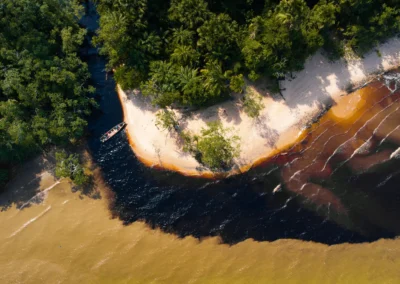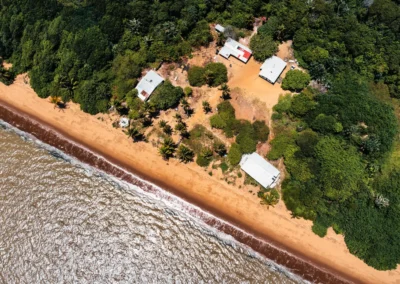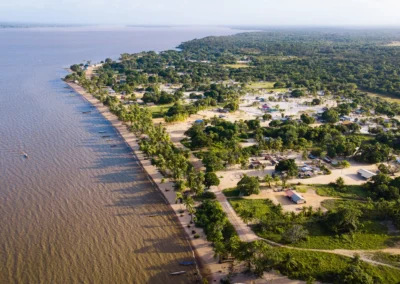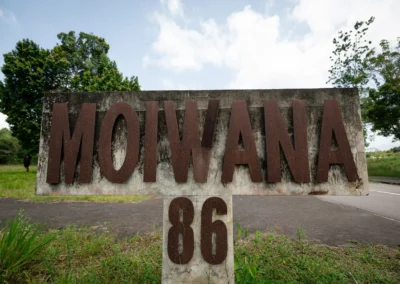
MAROWIJNE
Marowijne occupies the far northeastern corner of Suriname, where the land meets the Atlantic Ocean and the Marowijne River, which separates the country from French Guiana. The district is best known for its natural beauty, cultural diversity, and unique coastal wildlife — most notably, the sea turtles that have made these beaches their nesting grounds for centuries.
Galibi & Babusanti – Turtle Beaches and Nature Reserves
In the Galibi Nature Reserve, located near the Indigenous village of Galibi, sea turtles return between February and August to dig their nests and lay eggs. Baby turtles hatch and dash toward the ocean, beginning a life cycle that will lead them back to the same beaches as adults.
Access to Galibi is only by boat from the eastern border town of Albina, a trip of roughly an hour and a half. For those seeking a more accessible beach experience, Erowarte, a small Indigenous village about five kilometers north of Albina, offers a quiet beach reachable by car. Here, visitors can camp under the stars or spend a peaceful day sunbathing in almost complete solitude.
Moengo – Hills, Culture, and Maroon Villages
The town of Moengo stands out for its hilly landscape along the Main Road, a rare feature in the otherwise flat coastal region. From the market landing spot, visitors can join boat tours to nearby Maroon villages such as Petondro and Tamalin. These excursions offer insights into traditional Maroon life — including cooking, clothing, and local rituals.
Like the rest of Suriname, Moengo is a cultural melting pot. Indigenous peoples, Maroons, and a significant Javanese community coexist, creating a rich tapestry of languages, traditions, and flavors.
Albina – The District Capital
The main town of Marowijne, Albina, is lively and energetic, resembling a small port city. Boats frequently travel between Albina and French Guiana, reflecting the district’s position at the crossroads of Caribbean and European living standards.
Because of this international connection, many locals speak at least some French. In Albina, it’s common to hear multiple languages spoken in a single conversation — a testament to Marowijne’s diversity and openness. Visitors are usually met with warmth and helpfulness, making it easy to explore the district’s unique culture and attractions.
Practical Tips
- Marowijne’s beaches and nature reserves are best accessed by boat tours or guided trips.
- Birdwatchers and wildlife enthusiasts will enjoy the quiet beaches, mangroves, and riverside villages.
- Albina serves as the gateway to French Guiana, so passports or ID may be needed for border visits.

















